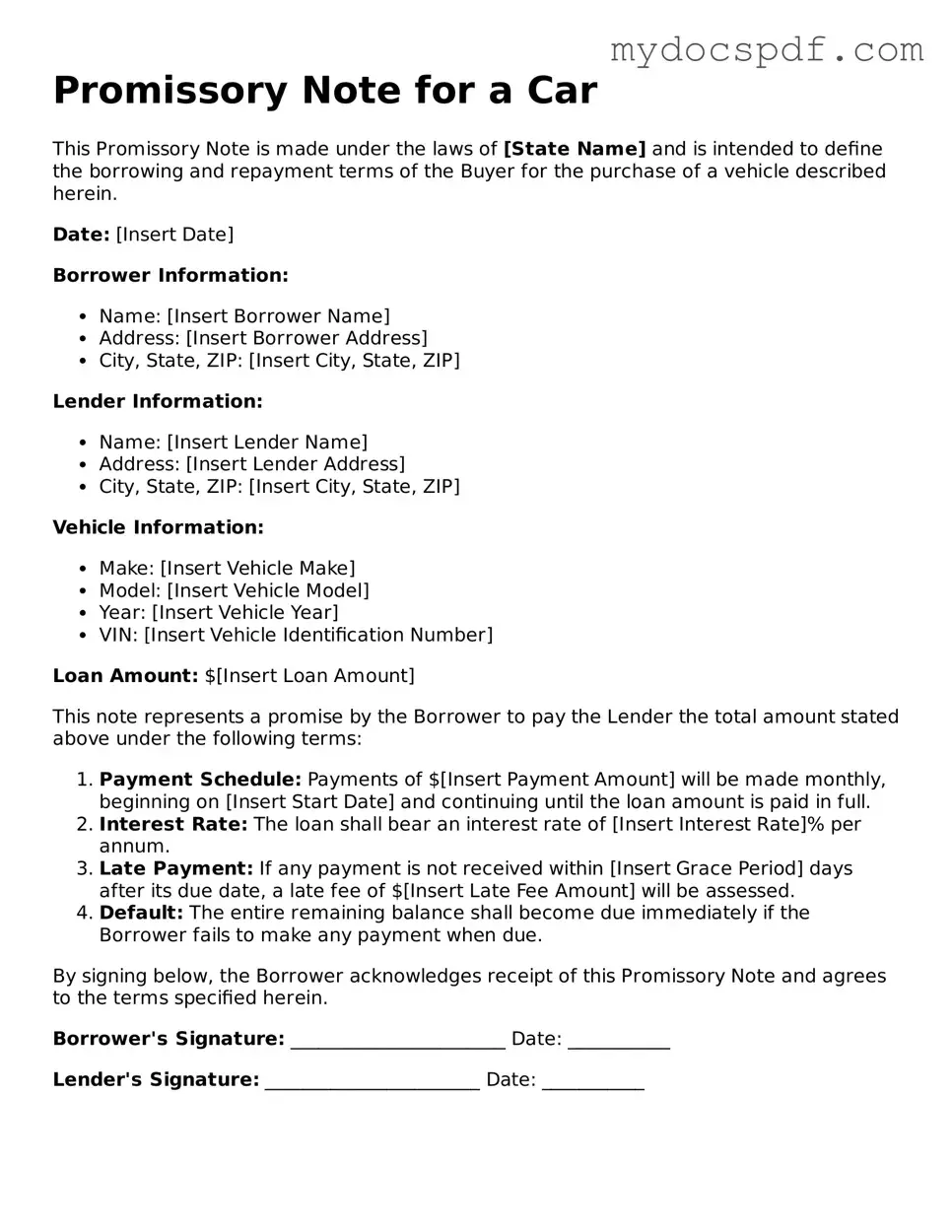Promissory Note for a Car
This Promissory Note is made under the laws of [State Name] and is intended to define the borrowing and repayment terms of the Buyer for the purchase of a vehicle described herein.
Date: [Insert Date]
Borrower Information:
- Name: [Insert Borrower Name]
- Address: [Insert Borrower Address]
- City, State, ZIP: [Insert City, State, ZIP]
Lender Information:
- Name: [Insert Lender Name]
- Address: [Insert Lender Address]
- City, State, ZIP: [Insert City, State, ZIP]
Vehicle Information:
- Make: [Insert Vehicle Make]
- Model: [Insert Vehicle Model]
- Year: [Insert Vehicle Year]
- VIN: [Insert Vehicle Identification Number]
Loan Amount: $[Insert Loan Amount]
This note represents a promise by the Borrower to pay the Lender the total amount stated above under the following terms:
- Payment Schedule: Payments of $[Insert Payment Amount] will be made monthly, beginning on [Insert Start Date] and continuing until the loan amount is paid in full.
- Interest Rate: The loan shall bear an interest rate of [Insert Interest Rate]% per annum.
- Late Payment: If any payment is not received within [Insert Grace Period] days after its due date, a late fee of $[Insert Late Fee Amount] will be assessed.
- Default: The entire remaining balance shall become due immediately if the Borrower fails to make any payment when due.
By signing below, the Borrower acknowledges receipt of this Promissory Note and agrees to the terms specified herein.
Borrower's Signature: _______________________ Date: ___________
Lender's Signature: _______________________ Date: ___________
